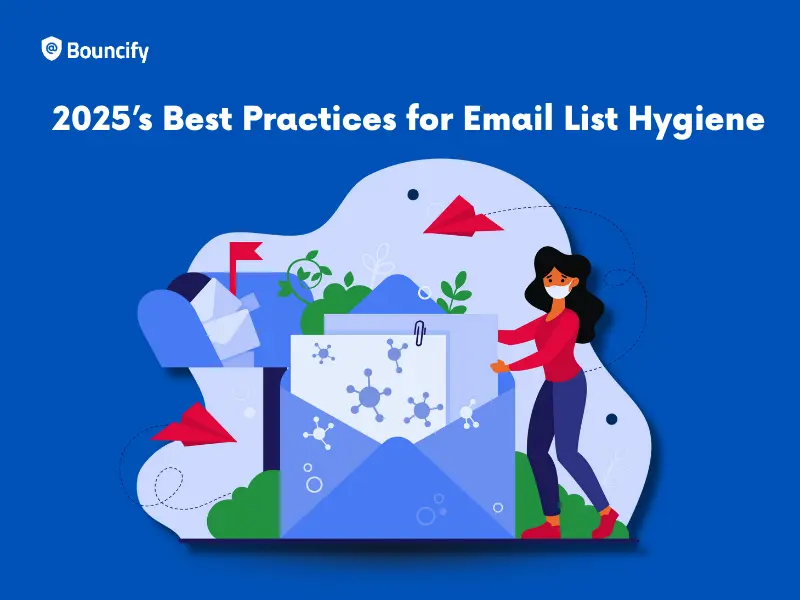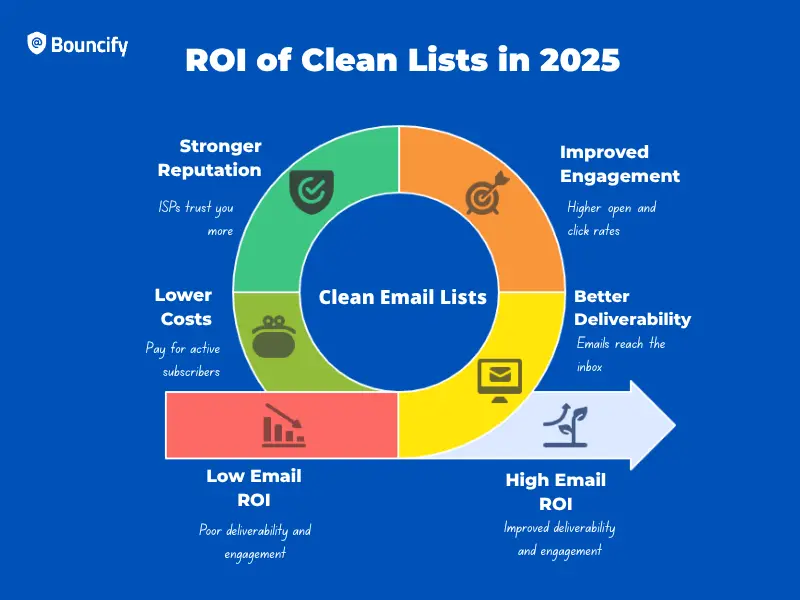2025’s Best Practices for Email List Hygiene

In the fast-evolving world of email Verification services, your email list is one of your most powerful assets. But here’s the truth: a messy list can tank your campaigns, hurt your sender reputation, and cost you real money.
That’s where email list hygiene comes in - and in 2025, it's no longer optional. Whether you’re a startup, an eCommerce brand, or an enterprise marketer, the best email list cleaning practices are your first step toward higher inbox placement, engagement, and ROI.
Let’s explore what’s changing in 2025 and how you can stay ahead with the smartest email hygiene tactics.
Why Email List Hygiene Matters More in 2025
In 2025, inbox providers like Gmail and Outlook have become even more aggressive in filtering out spam and low-quality emails. If your emails are bouncing, landing in spam, or going to inactive users, your entire domain reputation suffers.
Think of email list hygiene as the daily brushing and flossing of your marketing strategy. Skip it, and you're in for a world of trouble - low open rates, high bounce rates, and wasted marketing spend.
Best Practices for Email List Cleaning in 2025
1. Use a Reliable Email Verification Tool
Start with a solid foundation: run your list through a trusted email validation tool. The best email list cleaning services in 2025 offer features like:
- Syntax and domain checks
- Spam trap removal
- Role-based email detection
- Real-time verification API
Pro tip: Don’t wait for bounce reports - proactively clean your list before every campaign.

Ready to improve your email deliverability? Sign up now and verify your emails with us for free.
2. Segment Inactive Users - Don’t Just Delete Them
Not all inactive subscribers are dead leads. Use re-engagement campaigns to win them back. But set a clear cut-off. If there's no activity after multiple touchpoints, it’s time to remove them.
This keeps your list lean and focused, improving your engagement metrics across the board.
3. Implement Double Opt-In (DOI)
2025 is all about permission-based marketing. Double opt-in ensures that only genuinely interested users join your list, helping you build a more engaged and high-quality audience. It eliminates fake signups, bots, and typos - a critical component of email marketing services that perform.
Bonus:It also helps to protect your sender reputation by minimizing unnecessary bounces.
4. Clean Your List Regularly - Not Just Once
Email list cleaning isn’t a one-time fix. Set a monthly or quarterly schedule to keep your list clean by removing invalid or inactive subscribers.
Automated tools now make it easier than ever. Some of the best email verification services integrate with top verification APIs for automatic list cleaning.
5. Monitor Hard & Soft Bounces Closely
Hard bounces (invalid emails) must be removed immediately. Soft bounces (like full inboxes) should be monitored and purged if they continue over multiple campaigns.
Tip: Set up rules in your email platform to automate this step. It’ll save you time and protect your sender score.
6. Avoid Purchased Lists at All Costs
Yes, it’s 2025 - and marketers are still buying email lists. Don't be that person.
Purchased lists are often filled with outdated, invalid, or spam trap emails - damaging your deliverability and risking domain blacklisting.
Instead, focus on organic list-building strategies: gated content, lead magnets, and optimized landing pages.

The ROI of Clean Lists in 2025
- Better deliverability: More emails in the inbox means more conversions.
- Improved engagement: Open and click rates rise when you're reaching real people.
- Stronger reputation: ISPs trust you more, increasing inbox placement.
- Lower costs: Pay only for real, active subscribers - not dead weight.
Final Thoughts
If you want to get serious about ROI from your email verification services, start with your list. In 2025, it’s not about how big your list is - it’s about how clean and active it is.
Invest in the best email list cleaning tools like Bouncify, clean your data regularly, and watch your email metrics soar.
Remember: It’s not about sending more emails — it’s about sending smarter ones.